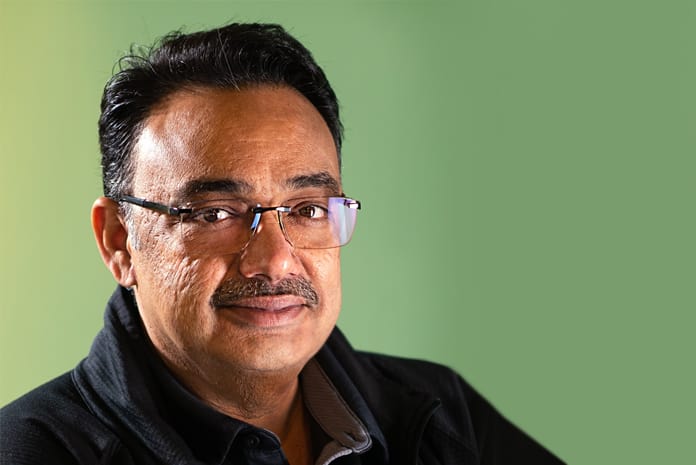In a free-wheeling conversation with CRN India, despite the competition, AS Rajgopal, CEO of NxtGen Infinite Datacenter voices reasons why he believes the Indian cloud momentum is a “hot-bed” for investments and it will continue to be a cloud alternative with an aim to get 10- 12% of the cloud market
Can you share the journey of NxtGen from data centre provider to now cloud provider with the recent launch of the SpeedCloud?
It’s true that we are a data centre company but approx. 86 percent of our revenue comes from cloud services. We operate fairly large cloud infrastructure, including government initiatives such as elections and the recent Covid safety. We also empower companies like a Bookmyshow, Godrej and Mahindra, etc. We’ve been operating cloud services for a long time, but the belief is that cloud services started as one player, which and now there are eight players. In the US, there are more than 50 service providers who have more than $ 100 million in revenue. Hence cloud is not going to be a five to ten players’ game.
There will be many more who play a role in this and we want to make a mark there. The Indian consumer is demanding and value-conscious. If we can satisfy the Indian market by providing value and quality to Indian enterprises, then we certainly can make a global sense and with that confidence, we want to make a global mark. Right now, we are providing more than 300 servers to customers in Europe and see that moving and will cover a small section of the US as well. But we also see that countries like Indonesia which are not yet ready for public cloud will mobilise quickly.
How are you going to differentiate your journey compared to the existing cloud players? Also, tell us where India stands in the public cloud rollout. What has been your key insight about this public cloud industry, overall?
Two points on this one. Regarding hybrid cloud, since 2014 we have been providing on-premise cloud infrastructure, which at that time, unfortunately, wasn’t called hybrid. Godrej and Toyota are classic examples which are truly hybrid cloud. There are certain applications that run on customer premises and the more elastic applications actually sit in the public cloud. Therefore, we are fully ready and a part of this cloud can be deployed on customer premises so that they can enhance their existing resources or add capabilities and do a number of things with them. The way we’re seeing things evolve, users want to move their application closer to data. Let’s take the example of elections. If one wants technology to enable 100 percent voting, we have to be able to serve the customer who is generating the data, whether it’s their face for authentication or the vote, we need to take the application closer to them.
We’re deploying our cloud in 14 high GDP cities in India which have higher GDP than 200+ countries. In fact, Kerala is a bigger market than Srilanka. We are treating 14 high GDP locations to power the country and we want to compliment this with 236 locations of Edge.
India has 644 districts and we ideally should have an Edge in every location but our initial plan is to have 236 locations where the Edge will represent. This infrastructure, 14 + 236 = 250+ points of presence will give effective low-latency coverage for application. That will change the paradigm in terms of how people are looking and I think that’s where the cloud is going. The excitement has shifted towards Edge and most of the consumption is not going to be generated from enterprise applications but from IoT and other devices including smartphones. We will be covering a country like nobody else and 236 locations are reasonable coverage for a large country like India.
How much investment you have put into expanding your cloud touchpoints.
This cloud service will require nearly INR 600 crores of roll out and the market reach will be enabled through partners. Today, we are reaching out to close to 7,000 partners and believe we can nurture about 2,000 of them over a period of one year. It’s a fairly large infrastructure. To give you an example, we rolled out 10,000 virtual machines in 55 minutes. This has not been possible in any Indian cloud so far, whether hybrid or not. So, we have the capacity and the technology to actually enable this.
We will catch up on brand awareness, but we position ourselves in terms of price performance. If we are to benchmark with Amazon’s Lightsail, one of the lowest-priced virtual machines from Amazon, ours would be about 70% lower cost than that and our workload will outperform by at least 3x. So basically, it’s price and performance, or price performance is the value we take. We are working on our market reach and brand awareness for consumers to decide but in terms of capabilities and price performance, this is of significant value for customers.
The government business has been a major force for NxtGen. How are leveraging your success in govt to tap new verticals?
We currently have more than a thousand customers. A lot of them are looking at using the container service, offered as part of SpeedCloud because it is smart enough to move closer to the customer across the Edge. Basically, if somebody in Kanpur wants to access/ provide some data, the Edge can spin a workload closer to the customer, serve them and then come down, because it’s a container base. There are currently three existing customers who are using these Edge services. The containers are one thing that our existing customers will leverage and I believe that the 2000 channel partners will help onboard more customers.
Our work with the Ministry of Health has helped us grow together while government work grew almost 50% for us last year. There is ample opportunity with the government, it’s just about how much we can take. We are working with the Ministry of Finance and that does pave way for us with financial services. It will give bigger banks the confidence to move to us and also be able to serve all other verticals very well. We are looking at quite a lot for manufacturing because we have a very strong video analytics base. There are many use cases that we’ve developed to actually help monitor the manufacturing side of things, whether it’s worker safety or productivity. There will be a lot of very exciting work for manufacturing to start with. In terms of data processing, we can serve financial services.
The security breaches are all-time high be it in the government and financial services. How you ensure the data security and privacy of your customers amidst the pandemic
It’s certainly very critical. One thing that builds our credibility with customers is our experience and expertise of closely working with the Election Commission for six years. Through these years, there has not been a single breach, despite having almost 92 percent traffic from across global geographies that try to breach the portal. So, our customers get confidence from our established track record. At the same time we acknowledge, the security threat is constantly evolving and so it’s important that we are actually looking at all anomalies very closely. We operate a very big part in Bangalore, looking at the data. Since we don’t ask customers for information, we don’t store so there is nothing to lose. The complete control is given to the end customer.
That’s the policy we follow and it gives a lot of confidence to our consumers because most of NxtGen’s clients are millions of users. They need to be really confident about us because we can’t be compromising them and we don’t compromise because we don’t have that data. Even, during the lockdown period, around 40 odd people lived in our data center. It’s an essential service and whatever happens, we can’t shut down and is not an option for us. The government also recognised the same last year, granted us permission to operate, and supported us in every possible way. Having said that, we have learned quite a lot from these times.
We have an internal agenda called human-free data centers, which is a global concept. We want to eliminate any process, which requires humans at the data center or reduce the number of people to make it human-free. In fact, security is fully taken over by video analytics and we don’t have to manage it ourselves. All NxtGen employees are recognized by face and whether they get access or not, it’s all machine-dependent. In most of the processes, except for those where physical replacement is not possible, we are able to leverage these technologies. Data centers are a very expensive asset and normally it’s very difficult to leave them unattended but maybe one year down the line, we will become human-free data centers.
Can you share your plans to grow your cloud business in India? Are you exploring inorganic growth as well?
We have a turf to hold but In India, we are bigger than Google in the cloud as they don’t have big enterprise holdings here. So, it’s Microsoft Azure, AWS, and then NxtGen, in terms of size. Other Indian players, unfortunately, have stopped operating in cloud services. They’re reselling and system integrating the bigger cloud players. We don’t intend to do that. We will continue to be a cloud alternative and focus on 10 percent to 12 percent of the market, which is reasonably big. We aspire to be a niche player in the segment and our investor support will help us achieve that. We will also differentiate our offerings by soon launching the DevOps service and digital transformation as a service where we pick up a project and deliver it. Since we are budding, maybe we can rapidly innovate and retain our position and play among the top three.
Even now we are nurturing (not acquiring) 48 startups, all of which are working in different and exciting spaces in our cloud. One of them is going to offer augmented reality as a service from SpeedCloud and there are multiple SaaS products that will be launched. We are building products and these will be available at the click of a button in SpeedCloud with immediate effect. Before we look at acquisition, we’d have to evaluate if this is working well. There are two chatbot companies, then there are multiple AI-ML companies and then there is one AR Startup we are working with.
With India forging its path towards digital independence. How do you look at its success and what more to be done in this direction? Any thoughts?
I strongly believe that it’s important to build India’s own, digital independence. These laws are very critical. The biggest opportunity for all of us is to bring data into the country, Indian data, especially Indian user data should be held in the country so that we can apply laws on it and then maintain our digital independence.
Hopefully, NxtGen will make a contribution in that direction and host applications in the country. Strategically, having active long-term storage will help and we’ve put a lot of effort into ensuring that we have a very strong storage backbone because once you have data, you can do plenty of things with it. In terms of strategy, that’s our goal. We have an open-source, 36 petabyte data lake in Bangalore. But in our existing cloud, which is what we call Enterprise Cloud Services, we have 36 petabytes of flash storage in production. So, it is again very big. These two are already up and running in the existing cloud, however, these are not related to SpeedCloud, as it has just started.











